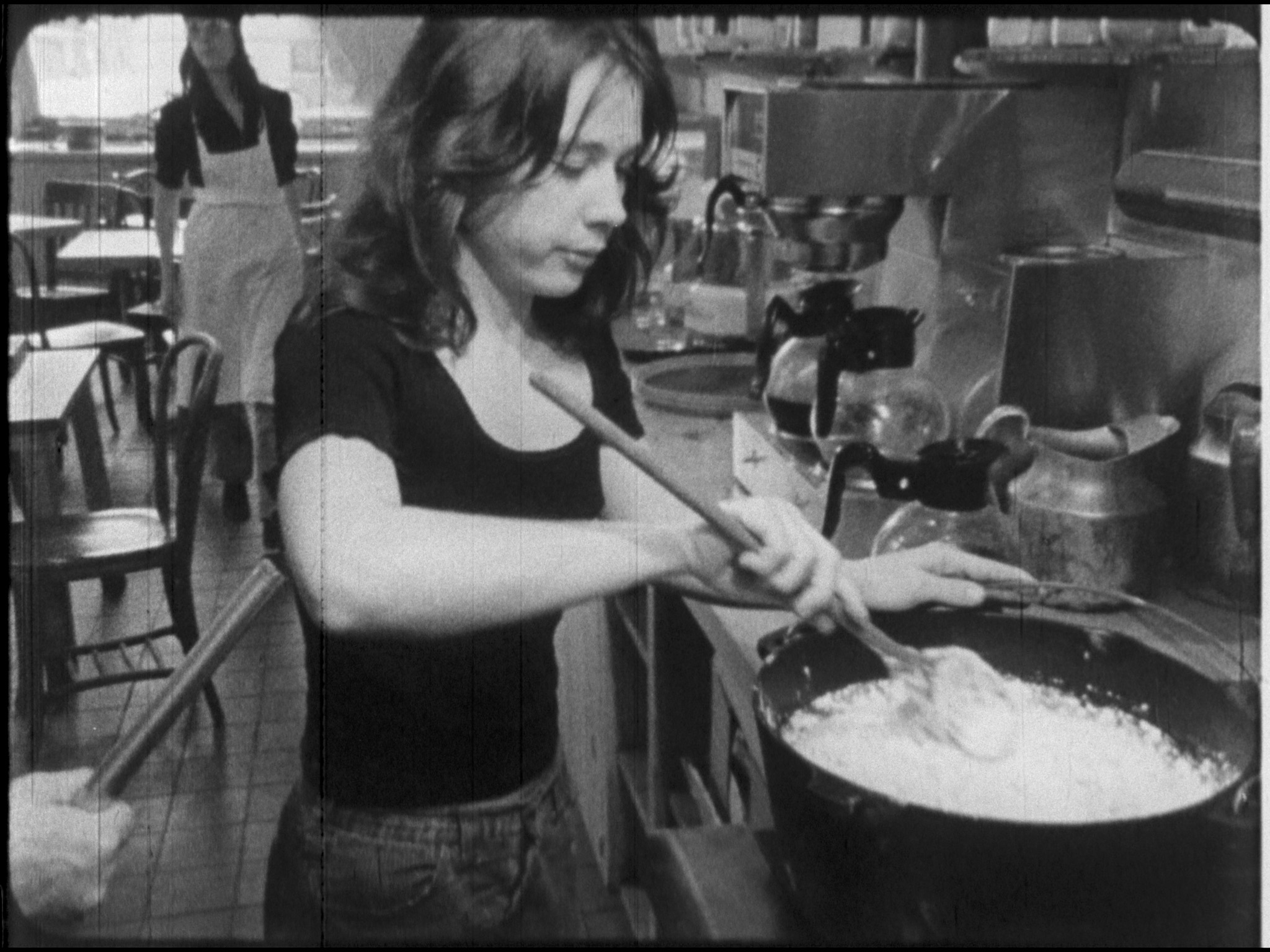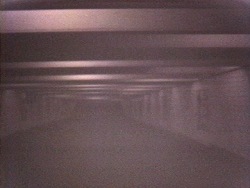
ARCHIVES IN THE 21ST CENTURY
ARCHIVES IN THE 21ST CENTURY
512 W. 19th Street, New York City
ARCHIVES IN THE 21ST CENTURY
512 W. 19th Street, New York City
ARCHIVES IN THE 21ST CENTURY
512 W. 19th Street, New York City
Works
Ant Farm's Dirty Dishes is a freewheeling portapak time capsule that captures the collective spirit of Ant Farm's life and work in California in the early 1970s. The artists use the early portable camera as an interactive sketchbook. Writes Chip Lord: "It's an anthology of clips from the first year of living with a Portapak and it gives a fairly good representation of the way we lived in those days - collectively, loosely, improvisationally."
Set in the arch-American "home movie" context of a sunny suburban yard, Rosler's early Super-8 film Backyard Economy I documents the products of mundane domestic chores. Silently depicting scenes of laundry hanging out to dry in a suburban backyard, Rosler points up the labor that allows leisure...
In this evocative formalist exercise, Lucier explores light in relation to the material properties of video. Aiming a laser directly at the camera's eye, she burned the vidicon tube. Changing the focal length of the lens and moving the laser, she records the optical effect of the camera's light perception and absorption. The resulting configurations, set to Alvin Lucier's electronic score Bird and Person Dyning, become an abstract calligraphy of light. Lucier's technology-based, visual records of refraction and reticulation refer to the Impressionists' empirical observations of changes in light over a measured period of time.
Food documents the legendary SoHo restaurant and artists' cooperative Food, which opened in 1971. Owned and operated by Caroline Goodden, Food was designed and built largely by Matta-Clark, who also organized art events and performances there. As a social space, meeting-ground and ongoing project for the emergent downtown artists' community, Food was a landmark that still resonates in the history and mythology of SoHo in the 1970s.
Hannah Wilke Through the Large Glass documents one of Wilke's most effective and well-known performances, in which she performs a deadpan striptease behind Duchamp's The Bride Stripped Bare by Her Bachelors, Even (also known as The Large Glass) at the Philadelphia Museum of Art. Dressed in a...
This series documents five unannounced performances by Fox in five outdoor locations in downtown New York over the course of a week. In each site, which included the Brooklyn Bridge and the Fulton Fish Market, Fox played a large metal bowl and a parabolic steel plow disc with a rosined violin bow. The resulting tapes were then screened each day as part of an installation at The Kitchen. Fox's ritualistic performances are observed by a distracted camera that scans the surrounding urban landscape, resulting in minimalist studies of time and place.
The Lunar Rambles series documents five unannounced performances by Fox in five outdoor locations in New York, which took place over the course of a week. In each of the downtown sites, which ranged from the Brooklyn Bridge to the Fulton Fish Market and Greenwich Street, Fox would play a large metal bowl and a parabolic steel plow disc with a rosined violin bow. The resulting tapes were then screened each day as part of a larger installation at The Kitchen. In each piece, Fox's ritualistic performance is observed by a distracted camera, which also scans the surrounding urban landscape and passersby. The near-ambient, droning sound, together with Fox's minimalist performances within the mid-1970's New York environment, result in oddly mesmerizing studies of time and place.
The Lunar Rambles series documents five unannounced performances by Fox in five outdoor locations in New York, which took place over the course of a week. In each of the downtown sites, which ranged from the Brooklyn Bridge to the Fulton Fish Market and Greenwich Street, Fox would play a large metal bowl and a parabolic steel plow disc with a rosined violin bow. The resulting tapes were then screened each day as part of a larger installation at The Kitchen. In each piece, Fox's ritualistic performance is observed by a distracted camera, which also scans the surrounding urban landscape and passersby. The near-ambient, droning sound, together with Fox's minimalist performances within the mid-1970's New York environment, result in oddly mesmerizing studies of time and place.
This marathon performance soiree was organized by multimedia artist Jean Dupuy at the Kitchen in 1974. Dupuy invited over 30 downtown artists, musicians, and filmmakers to each give a two-minute performance. The audience was served a home-made dinner of soup, apple tarts and wine, followed by the performance "menu." Performers included Charles Atlas, Joan Jonas, Hannah Wilke, Gordon Matta-Clark, Richard Serra, Philip Glass and Yvonne Rainer. This rare time capsule captures the SoHo art and music scene of the early 1970s.
This compilation was produced in 1975 by The Kitchen to present examples of its video, music, dance and performance art programs. The resulting compendium of multidisciplinary art works offers a window onto the downtown art and performance scene of the 1970s. Among the artists and works featured are Shigeko Kubota's 12-monitor video installation Video Poem; Trisha Brown's solo dance piece Primary Accumulation; Beryl Korot's 4-monitor video installation Dachau; Robert Kushner's performance The Persian Line; and a "word event" by Jackson Mac Low.
Three Frame Studies
Vito Acconci
1969-1970, 10:58 min, b&w and color, silent, Super 8mm film on video
In one of his earliest films, Acconci performs a series of actions — running in a circle, jumping, pushing another man — in which the physical limits of the action refer to the boundaries of the film frame itself.










